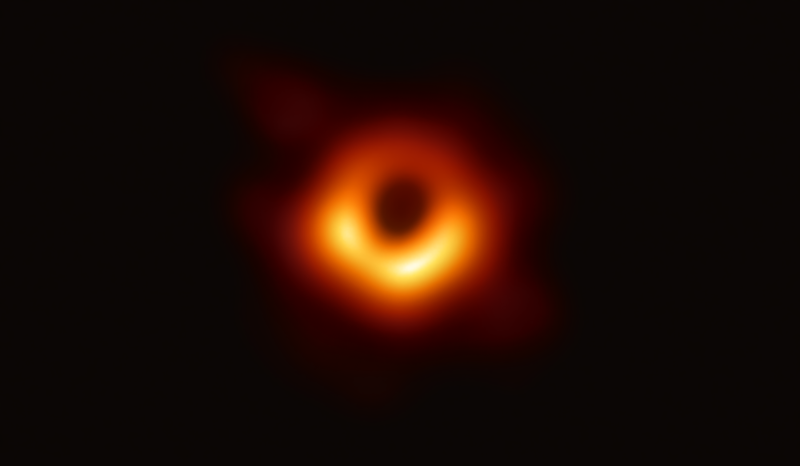Black holes have always increased our curiosity, and have been throughout the years many times in the center of interest in different sectors. Being first predicted by Albert Eistein’s theory of relativity, black holes became the astronomers focus, to search and find overwhelming evidence that they are actually out there.
But even if we know they exist, would it be ever possible to be captured in an image? Great movies about space have been directed, bringing us in first contact with this giant. Katie Bouman during her TED talk said “The Interstellar movie showed us an artistic interpretation of what a black hole might look like“. However, today we can actually see how it looks like, as astronomers captured the first image of a black hole.
Scientists have obtained the first image of a black hole, using Event Horizon Telescope observations of the center of the galaxy M87. The image shows a bright ring formed as light bends in the intense gravity around a black hole that is 6.5 billion times more massive than the Sun. This long-sought image provides the strongest evidence to date for the existence of supermassive black holes and opens a new window onto the study of black holes, their event horizons, and gravity. Credit: Event Horizon Telescope Collaboration – https://eventhorizontelescope.org/

According to The Guardian , “Developing new, sophisticated algorithms was a crucial part of turning the EHT data into an image. These needed to not only combine the data but also filter out noise caused by factors like atmospheric humidity, which warps radio waves, and precisely synchronising the signals captured by the far-flung telescopes.
While still studying at MIT, the computer scientist Katie Bouman came up with a new algorithm to stitch together data collected across the EHT network. Bouman went on to lead an elaborate series of tests aimed at ensuring that the EHT’s image was not the result of some form of technical glitch or fluke. At one stage, this involved the collaboration splitting into four separate teams which analysed the data independently until they were absolutely confident of their findings.
“We’re a melting pot of astronomers, physicists, mathematicians and engineers, and that’s what it took to achieve something once thought impossible,” said Bouman”. – Read more at The Guardian’s article “Black hole picture captured for first time in space breakthrough“
Katie Bouman is a member of the IEEE Computational Imaging Technical Committee. Her achievement as a woman scientist, being part in such a great team, is a big motivation for all young girls who might have second thoughts following the engineering fields for their profession. Moreover, she is one great example for those who think that women are not capable in making the difference and succeed in their profession whatever this might be.
For sure we will be waiting even more things to come by this team, which involves more than 200 researchers from Africa, Asia, Europe, North and South America.
During her TED talk, Katie Bouman said:“I’d like to encourage all of you to go out and help push the boundaries of science, even if it may at first seem as mysterious to you as a black hole.”
Enjoy her inspiring talk, describing how she and the rest of the team were working on the idea of how to take the first black hole picture.

